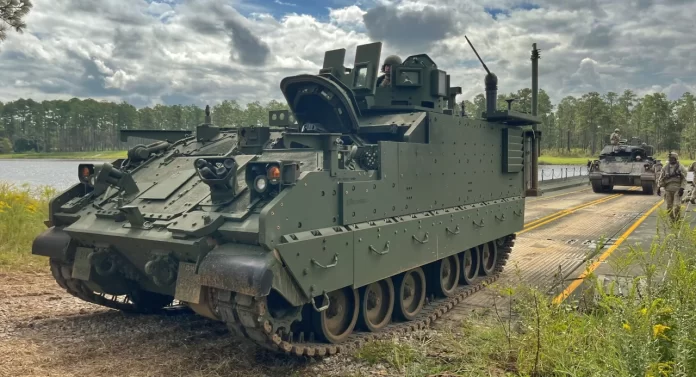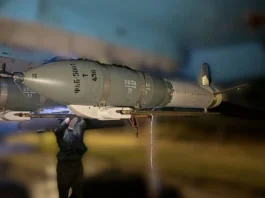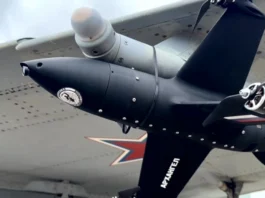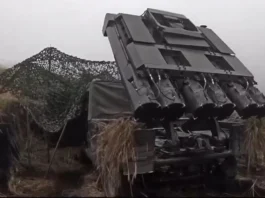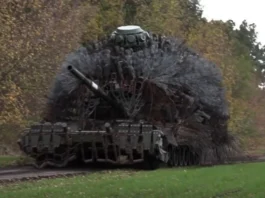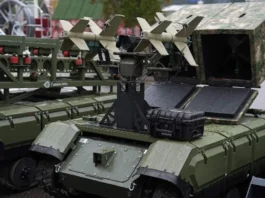BAE Systems and Forterra have announced a strategic partnership to create an autonomous prototype of the AMPV (Armored Multi-Purpose Vehicle), marking an important step in transforming the mechanized units of the U.S. Army. This collaboration has already garnered attention in the military technology sector, as it integrates Forterra’s sophisticated autonomous control technologies with BAE Systems’ extensive experience in armored vehicle production. In the second half of this decade, this project has the potential to become an innovation that could establish new standards for warfare, given the increasing global demand for combat vehicles that are self-operating, reliable, and flexible.
Origins and Significance of the AMPV Program
The AMPV program is a critical component of the U.S. Army’s armored force modernization initiatives. Its primary objective is to replace the M113 vehicles, which have been in service since the Cold War and are no longer compliant with current mobility or protection standards. The AMPV has been developed as a universal platform with five variants, including general-purpose carriers, medical evacuation vehicles, command posts, and mortar carriers. This means that the AMPV is not merely a substitute for the M113; it is a platform that is adaptable to a variety of battlefield duties.
In 2014, BAE Systems was awarded a contract for the production of AMPVs. The company has since undergone all phases of testing and improvement, and in 2023, the U.S. Army received its first serially produced vehicles. The first armored brigade of the 3rd Infantry Division was equipped with AMPV in the spring of 2023, marking an important stage in the large-scale renewal program. Full-scale serial production was announced at the beginning of 2025. Subsequently, the Army announced its intention to acquire an additional 309 units. AMPV is poised to become the U.S. Army’s foundational armored platform for decades to come, as evidenced by the consistent procurement schedule.
Autonomous Technology: Forterra’s Role
Forterra, a U.S. company that specializes in intelligent control systems for military and civilian vehicles, was involved in the new stage of development. The AutoDrive system, its main invention, guarantees an elevated degree of operational autonomy. AutoDrive allows a vehicle to autonomously navigate challenging combat environments, avoid obstacles, maintain secure routes, and complete assigned missions without direct human intervention. The system allows the vehicle to operate in hazardous regions remotely, thereby reducing crew risks and enhancing operational efficacy.
The incorporation of AutoDrive into AMPV marks the beginning of a new era for armored vehicles. Until recently, battlefield commanders have exclusively utilized crewed carriers; however, the transition to semi-autonomous and entirely autonomous operation has generated transformative tactical opportunities. A vehicle has the capacity to convey troops or supplies, as well as conduct reconnaissance, surveillance, and frontline support with minimal or no crew risk. It is crucial to note that AutoDrive was initially designed as a modular solution. Consequently, the technologies that are currently being jointly developed by BAE Systems and Forterra can also be incorporated into other platforms, including the Bradley A4 infantry combat vehicle and the M109A7 Paladin self-propelled howitzer.
Significance of the Battlefield
The transition to autonomy provides U.S. forces with several critical advantages. Initially, it decreases the number of casualties. Crew presence in high-risk zones has never been a strength in combat. Autonomous AMPVs have the potential to reduce human risk by carrying ammunition through contested terrain, supporting infantry under hostile fire, or clearing minefields. Secondly, it enhances the flexibility of commands. Commanders are granted additional maneuvering capabilities when they possess vehicles that do not necessitate continuous human supervision. Lastly, it facilitates operational scaling. Without increasing the demands on trained personnel, it is possible to deploy multiple autonomous vehicles simultaneously and network them.
The AMPV is already equipped with modern electronics, flexible armament, and robust protection, and its armor is capable of withstanding contemporary threats. In an autonomous variant, it could operate without a crew, enabling its entire interior to transport payloads, such as medical supplies, specialized sensor systems, or additional munitions. This modification would substantially broaden its tactical applications in various combat scenarios.
Preparing for the 2026 Demonstration
Both parties underscore that development is progressing at an accelerated pace. The first demonstration is scheduled for 2026, which will allow engineers and military operatives to test-drive these new control algorithms fairly soon. In contrast to a program that constructs a vehicle from the ground up, this endeavor is concentrated on the integration of autonomy into the AMPV platform that has already been field-tested. This expedites testing and reduces timelines. The prototype is anticipated to undergo live demonstrations at U.S. test ranges, followed by battalion-level trials. The Army could request the first autonomous AMPV batches as early as the latter part of the decade if the results are positive.
A Wider Trend in Autonomous Military Systems
The AMPV project is a component of a more extensive global trend toward autonomous land platforms that exhibit high levels of artificial intelligence and machine autonomy. Historically, the U.S. military has prioritized aerial drones; however, there has been a recent surge in interest in unmanned ground systems. Modern combat is becoming more reliant on “intelligent” systems that can independently navigate hostile terrain. This reduces personnel fatigue and enhances the adaptability of the force.
Many other nations are also making progress in this regard. The Uran-9 autonomous combat vehicle has been tested by Russia, Israel is in the process of developing unmanned patrol armored carriers, and China is investing in extensive AI-enabled expeditions. In light of this global context, the United States endeavors to preserve its technological superiority by guaranteeing that its ground forces implement the most sophisticated systems available.
Future Prospects and Challenges
Challenges persist, regardless of the benefits. The first is battlefield reliability, which necessitates autonomous systems to endure GPS denial, electronic warfare, and intricate terrain. In these circumstances, even the most advanced algorithms are subject to degradation. Another factor is expense: the cost of vehicles is significantly increased by advanced autonomy, which puts a strain on procurement budgets. Additionally, legal and ethical issues remain unresolved: who is accountable for the decisions made by semi-autonomous systems during combat? Although the U.S. Army has been investigating these inquiries for years, they have yet to produce definitive responses.
Nevertheless, the advantages are irresistible. The autonomous AMPV has the potential to significantly alter the nature of U.S. ground warfare if it fulfills its potential. The Army would not merely deploy a transport; rather, it would deploy a modular robotic platform that is capable of performing independent or coordinated combat missions. The establishment of combined human-machine brigades, a novel formation for future conflicts, would be facilitated by this.
In conclusion, the BAE Systems–Forterra partnership on the autonomous AMPV has the potential to revolutionize the global defense doctrine and American armored vehicle development. The demonstration that is scheduled for 2026 has the potential to establish new standards for armored vehicles in the 21st century. The U.S. Army’s capacity to deploy robotic systems at scale will be significantly enhanced by the successful incorporation of autonomy into a battlefield-proven vehicle platform, thereby altering both long-term strategic balance and tactics. The autonomous AMPV has already become a symbol of a new technological epoch in land warfare, despite the fact that many engineering and operational challenges persist.
